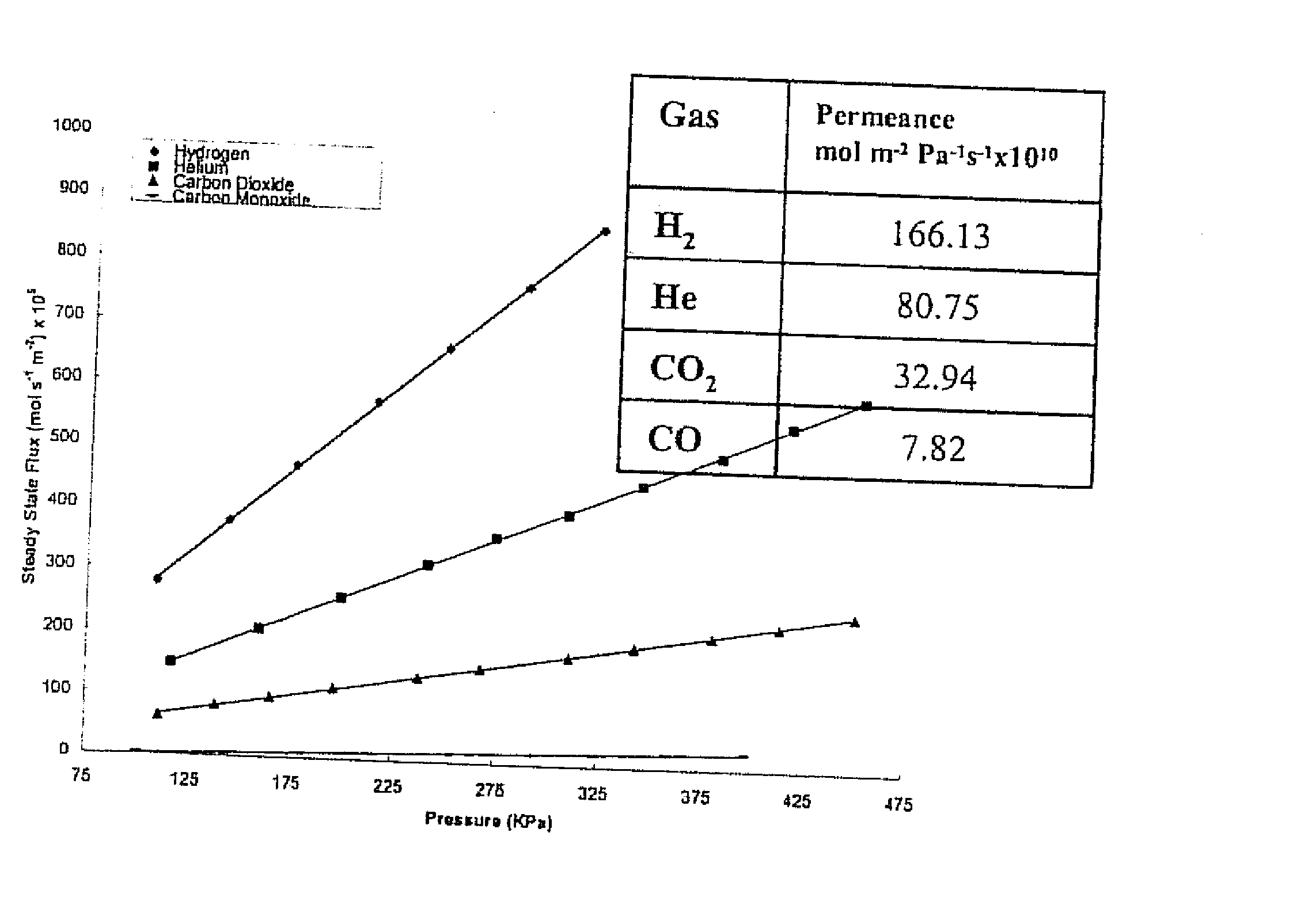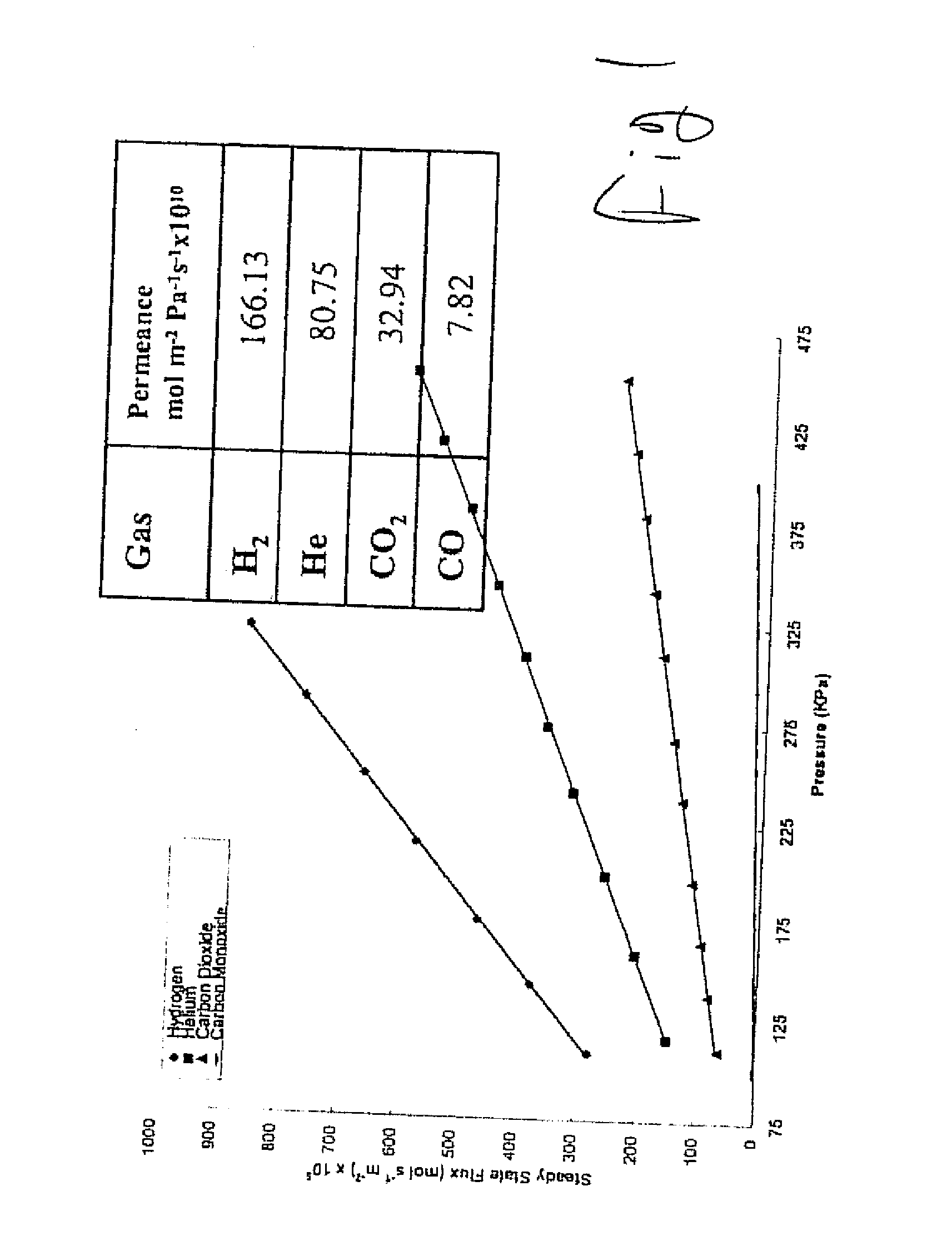Carbon nanocomposite membranes and methods for their fabrication
- Summary
- Abstract
- Description
- Claims
- Application Information
AI Technical Summary
Benefits of technology
Problems solved by technology
Method used
Image
Examples
Embodiment Construction
[0014] The membranes of the present invention comprise a carbon matrix formed from a pyrolyzed polymer. A plurality of nanoparticles are disposed in the matrix. The nanoparticles may be symmetrically dispersed throughout the thickness of the matrix, or they may be asymmetrically disposed so as to be more concentrated in one portion of the thickness. The nanoparticles typically have a size of less than 1 micron, and in particular instances have a size of less than 500 nanometers. In some particular instances, the particles have a size in the range of 10-50 nanometers. The particles generally comprise, on a weight basis, 0.1-5.0 percent by weight of the membrane. In particular instances, the particles comprise 0.2-0.6 percent of the membrane, and in one particular instance, the particles comprise approximately 0.5 percent of the membrane.
[0015] The particles may comprise various inorganic materials such as oxides, nitrides, carbides, oxynitrides, oxycarbides, and combinations of the ...
PUM
| Property | Measurement | Unit |
|---|---|---|
| Temperature | aaaaa | aaaaa |
| Fraction | aaaaa | aaaaa |
| Particle size | aaaaa | aaaaa |
Abstract
Description
Claims
Application Information
 Login to View More
Login to View More - R&D
- Intellectual Property
- Life Sciences
- Materials
- Tech Scout
- Unparalleled Data Quality
- Higher Quality Content
- 60% Fewer Hallucinations
Browse by: Latest US Patents, China's latest patents, Technical Efficacy Thesaurus, Application Domain, Technology Topic, Popular Technical Reports.
© 2025 PatSnap. All rights reserved.Legal|Privacy policy|Modern Slavery Act Transparency Statement|Sitemap|About US| Contact US: help@patsnap.com


